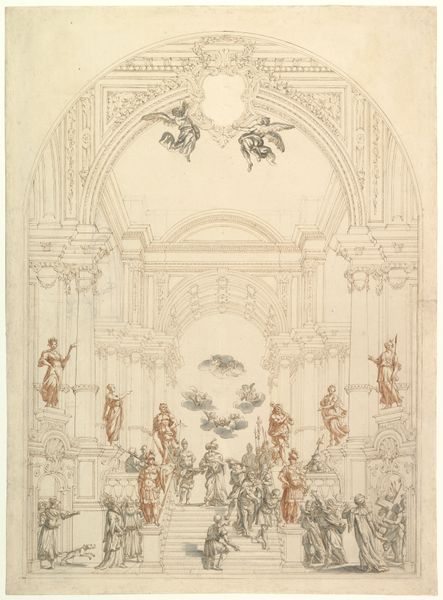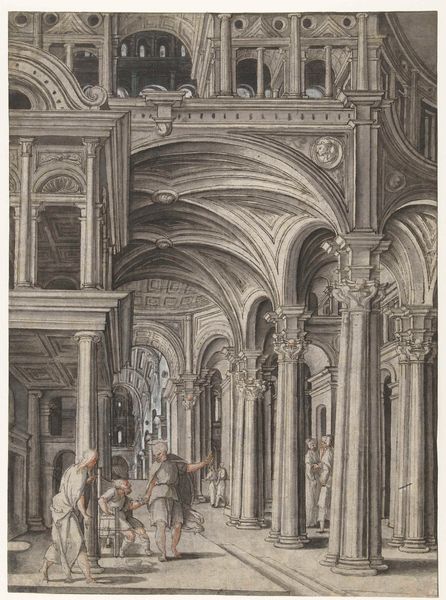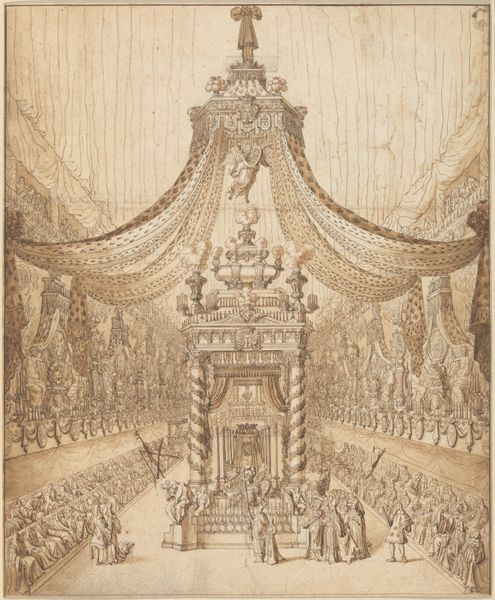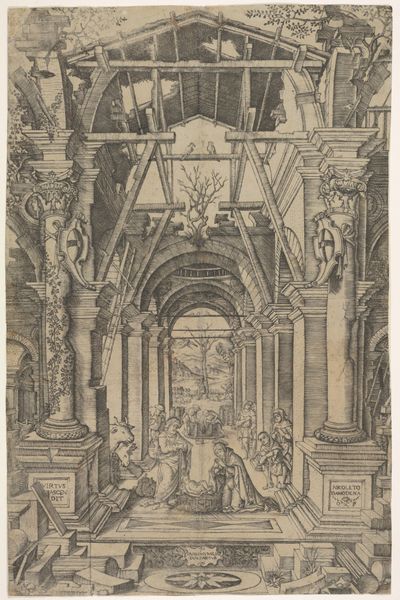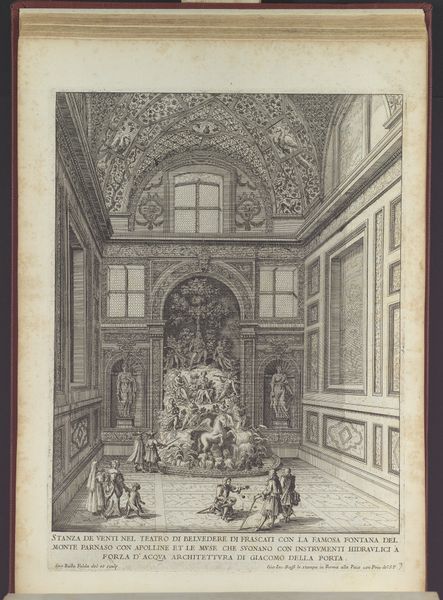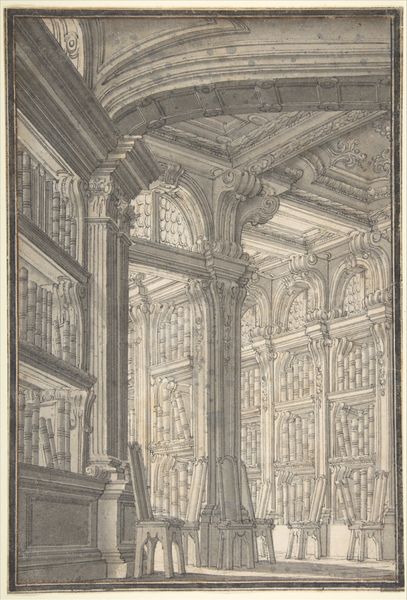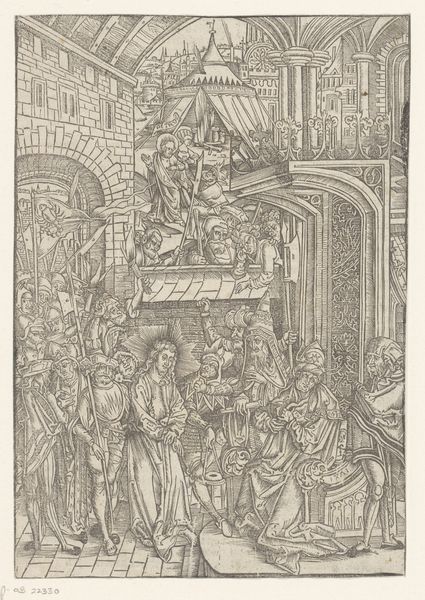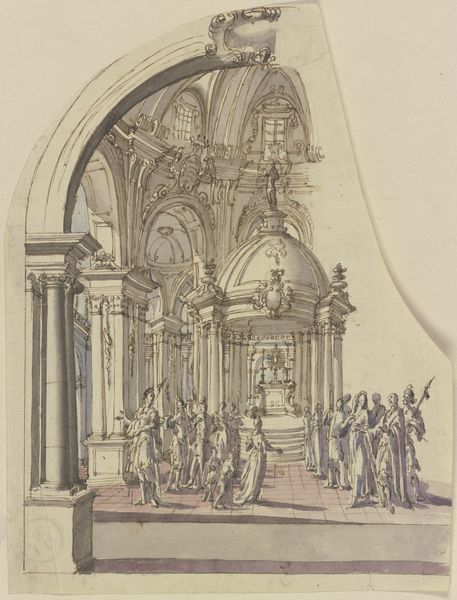
drawing, ink
#
drawing
#
toned paper
#
narrative-art
#
baroque
#
perspective
#
charcoal drawing
#
figuration
#
ink
#
cityscape
#
history-painting
Dimensions: overall: 60.8 x 40 cm (23 15/16 x 15 3/4 in.)
Copyright: National Gallery of Art: CC0 1.0
Curator: What an impressive, theatrical space rendered in sepia tones! The use of light and shadow to define the architecture and figures creates an immediate sense of drama. Editor: It’s Baroque grandiosity at its best! This drawing, "Christ Led Captive from a Palace," was created by Giuseppe Galli Bibiena between 1740 and 1745 using ink and charcoal on toned paper. What immediately strikes me is the use of readily available materials – ink and charcoal allowing for accessibility in production. Curator: Absolutely. The sepia wash gives the work a unified tonal quality, guiding the eye. Consider how the architecture, while seemingly detailed, is essentially suggested through variations in line weight and density of hatching. This highlights the formal element of the arch which is multiplied across the plane. Editor: Yes, and let’s think about *why* Bibiena chose such humble materials to depict such a grandiose subject. Perhaps he was commenting on the accessibility of religious narratives and the spectacle that could be staged even with minimal means. This suggests an emphasis on the material conditions of devotional expression during that time. Curator: I’m drawn to the dynamism inherent in the composition. Notice how the receding architectural space is not just a backdrop but a stage for the unfolding narrative, emphasizing the depth through orthogonal lines and diminution of scale. The cross becomes a vital part of that recession, framing Christ within the narrative. Editor: And it's interesting how that staged effect mirrors the kind of theatrical productions Bibiena designed sets for. His stagecraft directly influences the composition, emphasizing spectacle over strict adherence to Biblical accounts. The consumption of these images by his patrons certainly plays a vital role in both his chosen media and dramatic style. Curator: The tonal unity helps focus attention to areas of narrative significance and guides the eye through the artist's intentionally built space. Its formal quality makes its Baroque themes readable. Editor: Considering the toned paper as a readily available material, and the adaptability of ink and charcoal, it appears Bibiena was as concerned with accessibility as he was with pure visual drama. This adds to the understanding of Bibiena's social position as well as to how this type of religious image functioned.
Comments
No comments
Be the first to comment and join the conversation on the ultimate creative platform.
